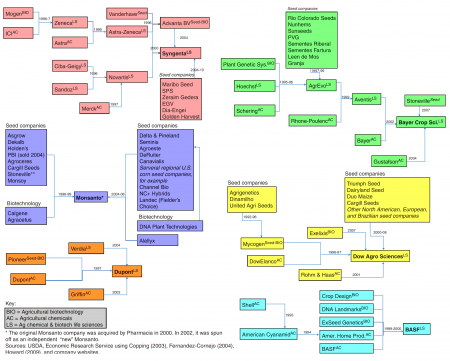We’re of course all holding our breath, are we not, over the imminent appearance of the American Journal of Botany Special Issue on what next-generation sequencing (NGS) technologies mean for the plant sciences. A few teasers are already out on the journal’s website, and it looks like the papers will come out in piecemeal fashion over the next weeks, and months for all I know. The paper that’s most relevant to us here is perhaps that of Susan McCouch and others on NGS and genebanks. I saw an early version of it, but am not allowed to share it, so until it comes out officially, here’s a taster from the introduction to the volume as a whole by Ashley N. Egan, Jessica Schlueter and David M. Spooner. I trust the journal will consider it fair use and not come after us with their lawyers.
A total of 1750 national and international gene banks worldwide preserve ~7 million accessions of advanced cultivars, landraces, and wild species relatives of plants that the world depends on for food, fiber, and fuel (FAO, 2010 ). McCouch et al. (2012) present a vision for the potential of large-scale genotyping to help characterize, use, and manage gene bank collections, from their perspectives as scientists working with large-scale rice collections. Genebanks have many pressing challenges due to the large size of their collections and the need to characterize them properly for a wide variety of users. They also face legal constraints (and opportunities) imposed in today’s climate of ownership of genetic resources. The challenges include the need to correctly identify accessions, track seed lots, varieties, and alleles, identify and eliminate duplicate accessions, justify adding new accessions to the collection, identify a small subset of the collection that represents a majority of the variation in the entire collection (a “core collection”), identify geographic areas holding useful sets of diverse alleles, associate genotypes with phenotypes, and motivate innovative collaborations to place useful materials into the hands of plant breeders. McCouch et al. (2012) outline these challenges and show how NGS can vastly improve genetic characterization efforts in genebanks. Initial NGS projects with the rice collections include identification of SNPs and other polymorphisms (http://www.oryzasnp. org/; http://www.ricediversity.org/; http://www.ricesnp.org/) based on large-scale resequencing and genotyping projects.
Back with a full discussion (and a comparison with the paper on the same subject in a recent Brainfood) when the publication is online.
